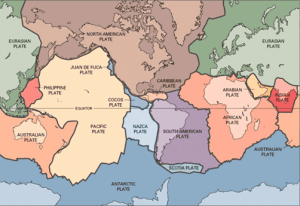TAG: GS 1: GEOGRAPHY
THE CONTEXT: The Himalayan Mountain range, an awe-inspiring geological marvel, is a result of the ongoing collision between the Indian and Eurasian tectonic plates.
EXPLANATION:
- The recent research is conducted by a collaborative team of Chinese and U.S. scientists.
- It sheds light on intriguing dynamics beneath the Earth’s surface.
- It suggests not only the continuation of the collision but also the potential cleaving of Tibet due to the unexpected behavior of the Indian plate.
Understanding the Tectonic Collision:
- Tectonic Plate Interaction:
- The collision between the Indian and Eurasian plates, a process spanning approximately 60 million years, has been known to create the Himalayas.
- Previous understanding emphasized the buckling and twisting of the Eurasian plate’s edge.
- However, the specific underground processes remained a mystery.
- Indian Plate’s Behavior:
- The study proposes that the Indian plate is plunging beneath the Eurasian plate during the subduction process.
- Unexpectedly, part of the Indian plate is found to be splitting apart under Tibet, with the eastern section tearing away from the western portion.

The Earth’s crust is divided into distinct “tectonic plates” that are always slowly moving. Earthquakes are concentrated along these plate boundaries
Implications of Plate Cleaving:
- Seismic Hazards:
- The study suggests that as the Indian plate cleaves below ground, it may create a zone of weakness, potentially leading to earthquakes and other geological hazards in the region.
- A professor at the University of California, Berkeley, sees the tear as a potential epicenter for large earthquakes accommodating the motion of the Indian plate.
- Zone of Weakness:
- The tear in the Indian plate is considered a “zone of weakness,” indicating vulnerability to seismic activities.
- The implications of such a tear raise concerns about the stability of the region and the potential risks associated with continental collisions.
Scientific Controversies and Perspectives:
- Debates in Scientific Community:
- The scientific community lacks a consensus on the exact nature of the collision between the Indian and Eurasian plates.
- Divergent opinions exist on whether the Indian plate is pushing horizontally beneath Tibet or diving vertically.
- Unique Geological Laboratory:
- The Himalayan region holds a unique status as the only place where a continental plate collision is occurring in real-time.
- Geophysicists acknowledge the scarcity of such opportunities to study continental collisions, considering it a “vanishingly short snapshot in time.”
Conclusion:
- The research provides a captivating glimpse into the intricate processes shaping the Himalayas and the potential consequences of the Indian plate’s unexpected behavior.
- As scientists continue to unravel the mysteries beneath the Earth’s surface, the study underscores the complexity of tectonic interactions and their profound impact on geological formations, seismic activities, and the overall dynamics of our planet.


